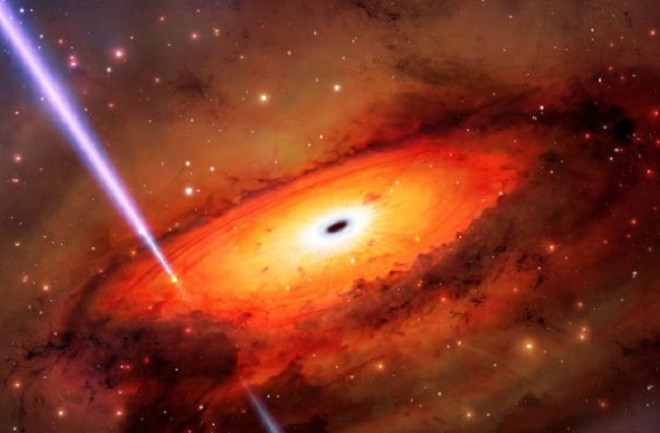The brightest outpourings of energy in the universe are gamma ray bursts. They are typically born as stars or other objects collapse into black holes and send out blasts of high-energy photons billions of light years across the universe.
Most commonly, the collapsing objects are massive stars that have burned through their nuclear fuel and imploded, causing gamma rays to shoot out in opposing directions.
But the universe has other tricks up its sleeve, according to a new paper. For the first time, astronomers have spotted a gamma ray burst from the crowded center of an ancient galaxy, confirming a long-held suspicion that the intense ejections could originate in such environments.
Read More: Unraveling the Brightest Gamma Ray Burst of All Time
A Signal From the Heart of a Galaxy
On Oct. 19, 2019, NASA’s Neil Gehrels Swift Observatory – a space telescope that orbits the earth – detected a peculiar gamma ray burst that lasted a little more than a minute. Seeing as most bursts last just a few seconds, this one classified as “long” and indicated something particularly interesting had occurred. Had a huge star collapsed, researchers asked, or had something more exotic occurred?
To answer this question, they turned to the Gemini South telescope at the International Gemini Observatory in Chile, which they used to study the burst’s afterglow. This helped them to pinpoint its source, which turned out to be a mere 100 light years from the core of an ancient galaxy, a place with few massive stars left to go supernova and birth a black hole. What such galaxies do have are cores filled with other types of stars, including white dwarfs and neutron stars, plus their cousins, black holes.
Space scientists have long speculated that the cores of ancient galaxies could serve as crucibles for rare gamma ray bursts, but until now, no one had ever observed such a flash.
What Caused the Galactic Burst?
The astronomers at Gemini South pored over the data and found no evidence of a supernova, meaning the burst came from something more exotic than a collapsing star. The team concluded that the signal came from the collision of some combination of two “compact objects,” meaning some assortment of neutron stars, white dwarfs or black holes.
“We had the first tantalizing evidence of a new pathway for stars to meet their demise,” says Andrew Levan, an astronomer with Radboud University, in a press release. “This is exciting for understanding how stars die and for answering other questions, such as [finding] what unexpected sources might create gravitational waves that we could detect on Earth.”
Compact objects rarely collide in other settings, so the discovery may help scientists to study such violent events as colliding neutron stars. To do so, they’ll have to contend with the clouds of gas that often permeate galactic cores and may have shielded other bursts from reaching earth.
Read More: Researchers Find New High-Energy Gamma-Ray Sources in the Galaxy

